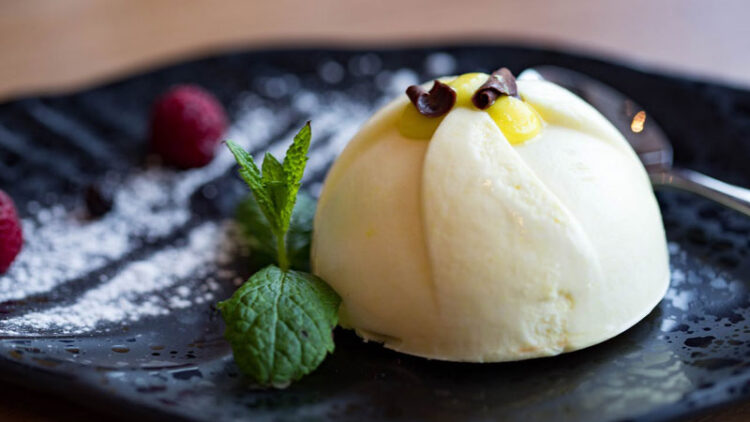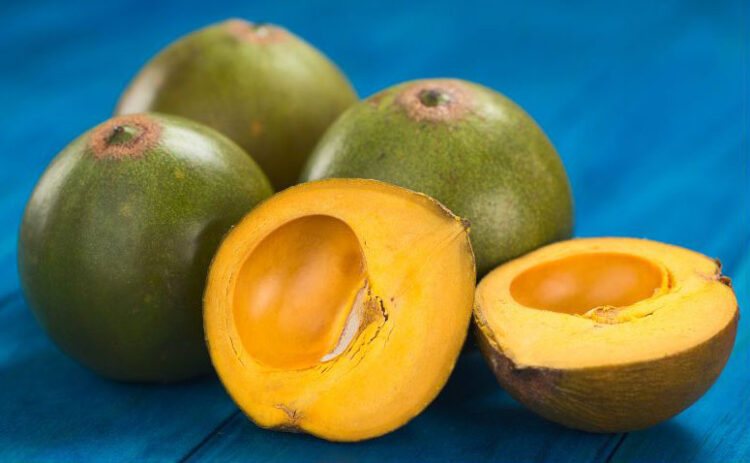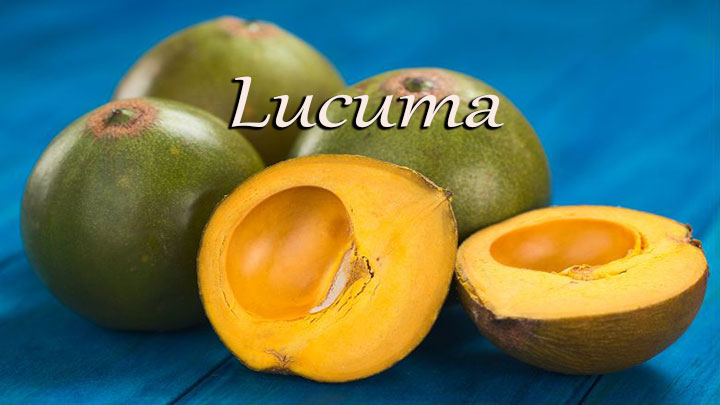When you think of sweeteners, does your mind automatically turn to the typical sugar cube? Or perhaps corn syrup is your solution? The problem is that these tantalize the taste buds at the cost of poor health and nutrition. If only Nature offered something that could satisfy the sweet-tooth and still bring the superfood delights to the body. Let’s travel to the Andes where such a plant grows: Lucuma.
Lucuma: A Wholefood Sweet Powder

Pronounced “loo-ku-ma” this superfruit comes from Andean valleys of Peru, Bolivia, Chile, and Ecuador. Otherwise known as the eggfruit, the creamy and yet crumbly texture of ripe lucuma does resemble a hardboiled egg. But don’t worry! It’s vegan! The outside skin appears to be as if an avocado and a mango did the tango together. The lucuma evergreen tree is native to traditional Incan territories, where it is also hailed as the “Gold of the Incas.” (1)
While the eggfruit has only joined superfood circles in recent decades, Incan cultures made regular use of it as a wholefood sweetener. The fruit tastes like an affair between maple syrup, monk fruit, and sweet potato. (2)
Because of its delicate nature, the raw fruit doesn’t transport well. Typically, the fruit ripens fully before it’s low-temperature dehydrated and ground into a powder. That powder is what most people know, using lucuma as a sugar substitute in smoothies, baked goods, and silky ice creams. Yum! (3)
Unlike table sugar, however, it will not readily dissolve in a beverage. So best to keep it as an ingredient in a combination recipe.
Diabetic-Friendly

The glycemic index is a measure of how foods impact blood sugar. If you eat a bag of cotton candy, for example, your blood sugar will rise higher than if you ate the same amount of popcorn. In other words, the higher the glycemic index score, the faster the sugar reaches the bloodstream. That sugar cube you thought about? That’s high on the scale. To give you an idea, the GI for sucrose is 65. Lucuma, on the other hand, comes in at around 5. (4)
Big difference!
The lower a food falls on the glycemic index, the slower glucose enters the system. Kind of like a “timed-release” which helps prevent as many dysglycemic symptoms as possible. This is a plus for diabetics who struggle with maintaining normal blood glucose levels.
Lucuma’s heavy complex carbohydrate content, as well as high soluble fiber, naturally down regulates the rate of sugar metabolism.
* If, however, you are looking for a non-glycemic index sweetener, then the way to go would be with either stevia leaf or monk fruit.
Better for Diabetics
A study conducted in the Journal of Medical Food revealed that of all the Peruvian fruits lucuma contained the highest alpha-glucosidase inhibitory activities. (5)
Why is that important for diabetes?
Well, as it turns out, these “inhibitory activities” are also used as pharmaceutical drugs. Specifically, the drugs delay carbohydrate absorption in the intestinal tract to lower post-meal glucose and insulin spikes. (6)
It’s hard to beat a side-effect free dose of sugar-modulating goodness that tastes good, too!
Can Lucuma Beautify, Too? Yes!

Colors often hold deep and rich nutritional significance when it comes to superfoods. Lucuma is no exception. Like squash and carrots, this sweet fruit has an orange-yellow color pigment from its high xanthophyll and beta-carotene content. So adding eggfruit to your favorite smoothie may also be an excellent skin-nourishing hack.
A 2017 study found that high beta-carotene containing foods gave more visible red, yellow, and orange undertones to the skin, which tended to increase the perceived attractiveness of participants. In other words, it tastes good while making you look even better! Not a bad trade off. (7, 8)
Other research found that the antioxidants were able to help guard against inflammation and fight free radicals, as well as promote eye, skin, and immune health. The ultimate aging in reverse! (9)
Topical Wound Remedy

Image by Freepik
Lucuma not only improves health from the inside out, but it also addresses the external directly. A study in the Journal of Cosmetic Dermatology demonstrated the wound-healing effects of lucuma nut oil when applied topically on an injury. They concluded that the nut oil will “promote skin regeneration and, thus, may have applications in medicine and skin care.” (10)
Sweet Tooth Combinations with Lucuma

How can you bring this delicious sweetener into your kitchen routine? Well, the sky is the limit!
Here’s a great place to start. If you like ice cream, then blend lucuma powder with some dates and frozen banana and coconut cream for a delectable dessert.
Since lucuma is arguably the most calorically dense fruit and is not hydrophilic – that is, water-loving – you will have to use at least twice as much as you would regular sugar to get the right consistency. It also works nicely combined with carob powder as a cacao milk substitute.



